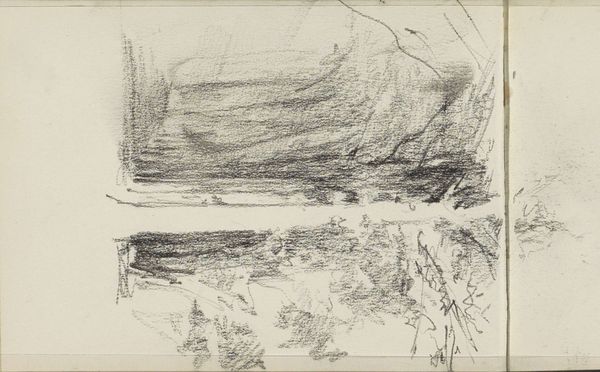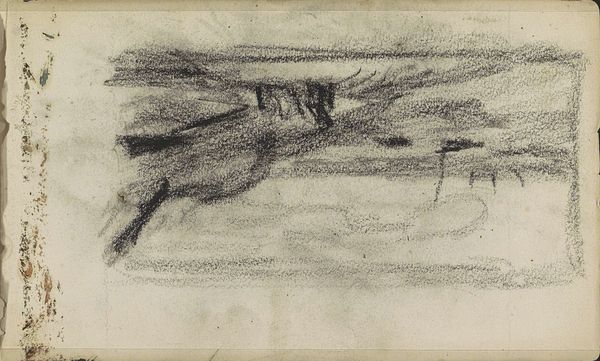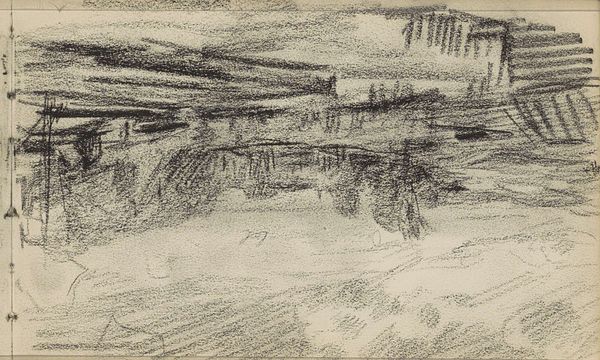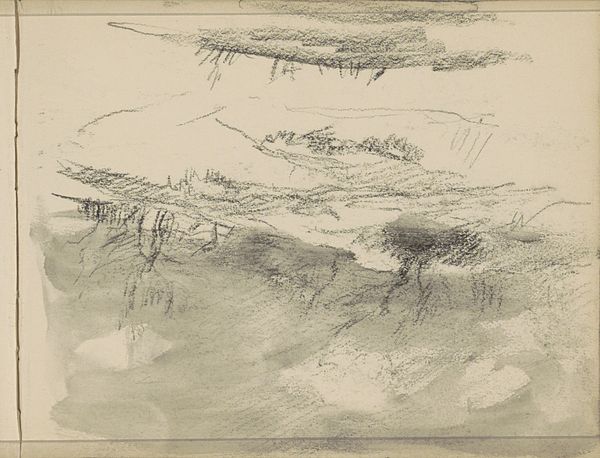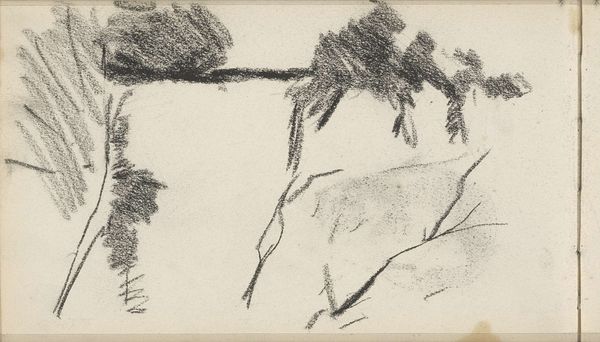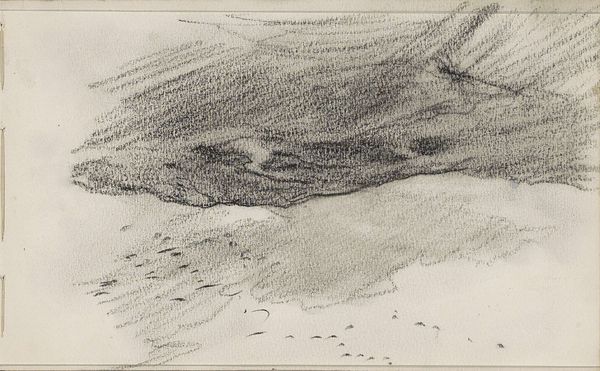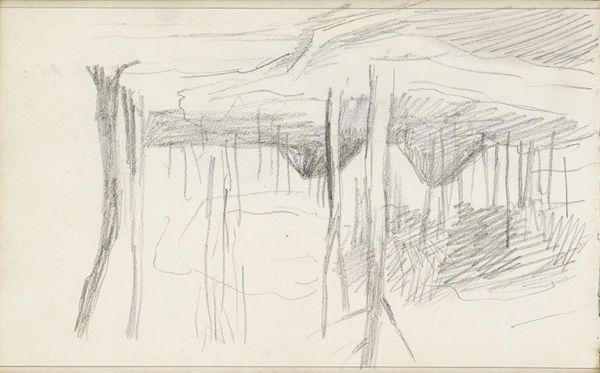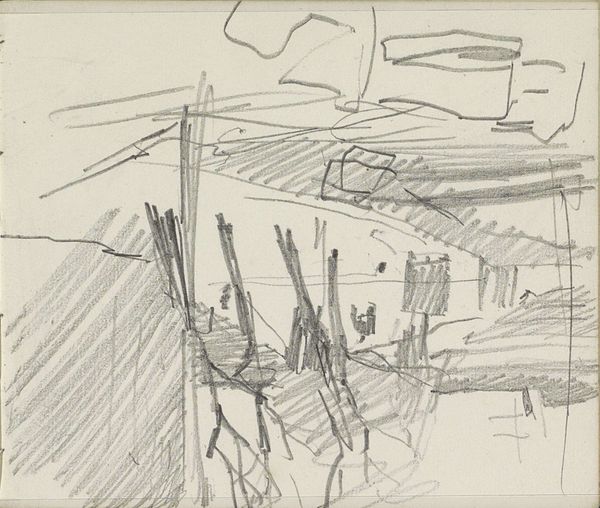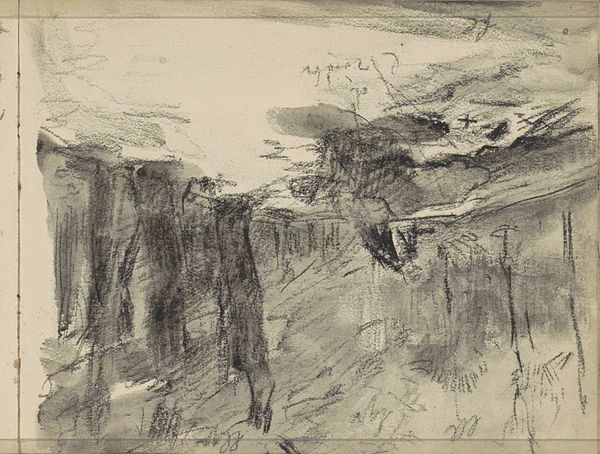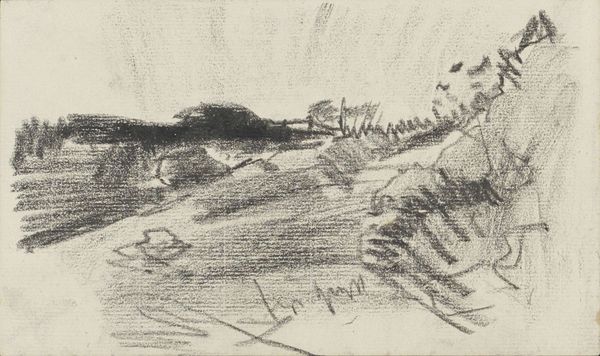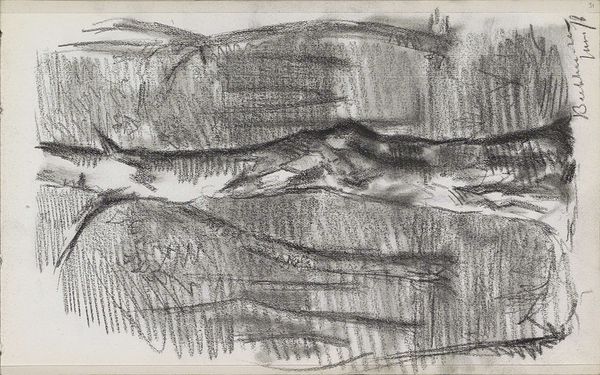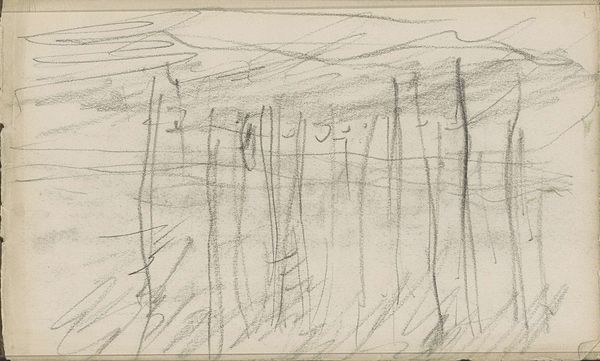
drawing, pencil, graphite
#
drawing
#
pen sketch
#
pencil sketch
#
landscape
#
mountain
#
pencil
#
graphite
Copyright: Rijks Museum: Open Domain
Johan Antonie de Jonge made this charcoal drawing, Berglandschap, sometime in the late 19th or early 20th century, and what grabs me about it is the sheer speed and simplicity of mark making. It’s all about the process here, right? You can almost see the artist outside, squinting at the mountains. De Jonge uses charcoal to suggest rather than describe, and it’s so physical. Look at those broad, sweeping strokes, laying down the basic forms of the landscape. The texture of the paper is allowed to show through, creating a sense of light and air. Then, there are these tiny, almost frantic scribbles that build up the darker areas. I love how he captures the ruggedness of the terrain with such economy of means. Those short, vertical dashes in the foreground? They could be trees, or just the artist’s way of grounding the composition. This piece reminds me a little of Boudin and the way he captured the light on the French coast with quick, gestural marks. But in de Jonge, there is an urgency, a rawness that feels very modern. And isn’t art just this ongoing conversation, across time and place, about how we see and experience the world?
Comments
No comments
Be the first to comment and join the conversation on the ultimate creative platform.
